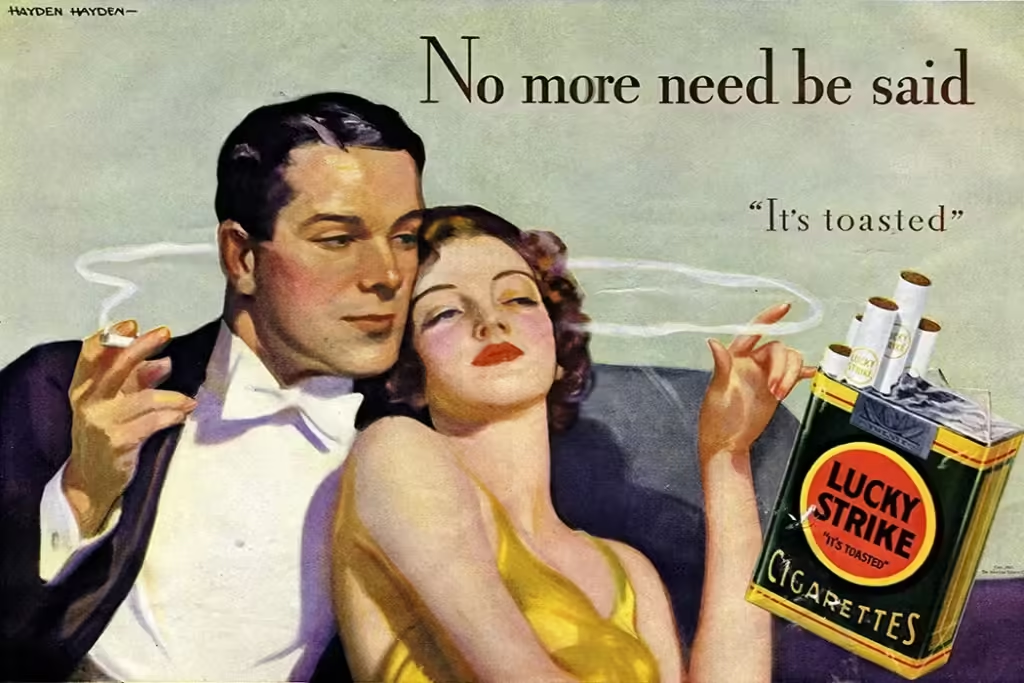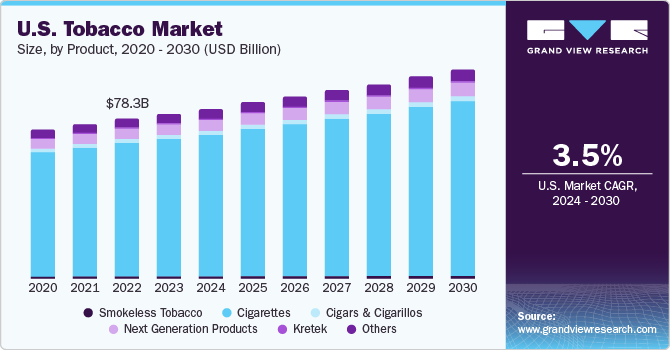The evolution of smoking laws reflects a complex journey through history, culture, and public health in the U.S.A. Tobacco use has transformed significantly, shifting from a cash crop to a pressing public health concern. This transformation highlights changing consumer preferences and the regulatory landscape surrounding tobacco products. The interplay of these factors has created a dynamic environment for tobacco regulation and consumption.
Initially, tobacco thrived as a lucrative agricultural product, but by the late 19th century, cigarette brands began to dominate the market. Mass production made cigarettes widely accessible, leading to increased consumption and the normalization of smoking in American culture. This accessibility fundamentally altered social norms surrounding smoking, embedding it deeper into everyday life.
In truth, the introduction of e-cigarettes and vaping devices attracted younger users, raising new concerns about nicotine addiction and safety. Emphatically, the tobacco industry faced increasing regulations, which aimed to protect public health and reduce smoking rates. These regulations have evolved, reflecting ongoing research into nicotine addiction and the health effects of tobacco use.
Currently, the tobacco landscape in the U.S.A. is characterized by the rise of e-cigarettes and vaping devices. These products have attracted a younger audience, contributing to a decline in traditional cigarette sales. Nevertheless, concerns about nicotine addiction and product safety continue to shape consumer behavior and public health initiatives, as smoking cessation efforts gain momentum.
Discover How Smoking Laws Shaped the Tobacco Industry’s Evolution in the USA
The history of tobacco in the U.S.A. highlights its evolution from a cash crop in the early 1600s to a major industry shaped by the rise of cigarette brands in the late 19th and early 20th centuries. The late 19th and early 20th centuries marked a significant transformation in tobacco consumption patterns, driven by the rise of various cigarette brands that became cultural icons. This transformation significantly impacted American culture and public health. The cultural significance of tobacco use cannot be understated, as it intertwined with various aspects of American life. The establishment of Jamestown, Virginia, played a crucial role in the early cultivation of tobacco.
This crop quickly gained importance, especially in the Southern states. As demand for tobacco grew, so did the tobacco industry, leading to increased production and consumption.
Specifically, the late 19th century marked a significant turning point for cigarette brands, which revolutionized how people consumed tobacco. These brands capitalized on mass production techniques, making cigarettes more accessible to the public. This shift not only changed consumption patterns but also influenced the marketing strategies employed by tobacco companies. Additionally, smoking became a widespread social activity, deeply ingrained in American culture.
In the early 20th century, the tobacco industry continued to flourish, with advertising campaigns promoting cigarette brands as symbols of sophistication and rebellion. On the negative side, this growth came with rising health concerns about smoking. Public health advocates began to raise awareness about the dangers of tobacco use, leading to the first regulations on tobacco products.
As the decades progressed, smoking cessation efforts gained momentum, particularly in response to the health risks associated with nicotine addiction. The introduction of e-cigarettes and vaping devices in recent years has further complicated the tobacco landscape. These products have attracted a younger demographic, shifting consumption patterns and challenging traditional tobacco regulations.
Today, the tobacco industry faces significant scrutiny and regulatory pressures. Smoking laws continue to evolve, aiming to reduce smoking rates and protect public health. Ongoing research into the effects of e-cigarettes and vaping devices will likely shape future regulations and public perception of tobacco products.
How Tobacco Products Went from Popular to Pariah in Society
The evolution of the tobacco industry reflects a shift from mass production and popularity to growing health concerns and regulatory challenges. This transformation illustrates how societal values and health awareness have influenced tobacco consumption patterns. The changing landscape of public opinion has played a crucial role in shaping tobacco regulations over the years. Emphatically, as evidence of the health risks associated with smoking became undeniable, the tobacco industry faced increasing regulations and scrutiny. This situation has shaped the marketing and availability of tobacco products, influencing consumer behavior significantly.
The development of mass production techniques made cigarettes widely available and affordable, increasing their popularity. The mid-20th century saw the emergence of health concerns related to smoking, leading to public awareness campaigns against tobacco products. Landmark events, such as the 1964 Surgeon General’s report, highlighted the dangers of smoking and nicotine addiction. This report served as a catalyst for change, prompting many to reconsider their smoking habits and the implications of tobacco use. The impact of this report reverberated through society, leading to a significant shift in public health policy regarding tobacco.
As the health risks associated with smoking became undeniable, the tobacco industry faced increasing regulations and scrutiny. Smoking laws began to evolve, aiming to protect public health and reduce smoking rates. Emphatically, as the tobacco landscape continues to change, the industry must navigate new challenges.
Today, the rise of e-cigarettes and vaping devices presents new challenges for the tobacco industry. These products have attracted a younger demographic, complicating traditional smoking cessation efforts. Furthermore, ongoing research into the health effects of these alternatives continues to inform public perception and regulatory measures surrounding nicotine addiction and tobacco regulations.

Smoking Laws Are Changing the Game for Young Vapers and Their Health
Imagine a bustling café where patrons sip on rich teas while discussing the latest trends in smoking laws. This scene reflects the evolving tobacco landscape in the U.S.A., marked by the rise of e-cigarettes and vaping devices. These products attract a younger demographic, sparking debates about their safety and long-term effects. The emergence of these products has ignited discussions about the future of smoking and public health initiatives aimed at youth.
The introduction of e-cigarettes has significantly altered consumer behavior. Many view these devices as a less harmful alternative to traditional tobacco products. In fact, concerns about their safety and the potential for nicotine addiction remain prevalent. Addressing this addiction is critical for public health advocates as they seek to implement effective cessation strategies. The tobacco industry faces scrutiny as it adapts to these changes, aiming to appeal to a new generation of users.
E-cigarettes have contributed to a noticeable decline in cigarette sales. This shift highlights the changing preferences among consumers, particularly younger individuals. Despite this decline, nicotine addiction continues to pose a significant public health issue. Cigarette prices have risen due to increased taxes and regulations. These measures aim to discourage smoking and protect public health. For the same reason, higher prices influence consumer choices, pushing some towards e-cigarettes and vaping devices. The ongoing evolution of smoking laws reflects the need for effective strategies to combat nicotine addiction.
As the tobacco landscape continues to change, the industry must navigate new challenges. The rise of vaping presents both opportunities and risks. Public health advocates remain vigilant, ensuring that regulations adapt to emerging trends. In the long run, the future of tobacco products hinges on balancing consumer preferences with health considerations.
Tobacco Industry’s Bold Move Towards Healthier Alternatives Unveiled
How is the tobacco industry transforming in response to changing consumer preferences and regulations? This question highlights the dynamic nature of tobacco products today. The industry’s response to these changes reflects a broader trend towards innovation in the face of regulatory pressures. The tobacco industry has adapted by diversifying its product offerings, including heated tobacco products and nicotine pouches. These innovations aim to attract consumers seeking alternatives to traditional cigarettes. Moreover, smoking cessation programs have gained traction, providing various methods to help individuals quit smoking, including counseling and medication. These programs are essential in addressing the ongoing challenges posed by nicotine addiction in society.
The regulatory landscape surrounding tobacco products continues to evolve, with the FDA implementing stricter rules on advertising and product safety to protect public health. These regulations reflect growing public health concerns regarding nicotine addiction and the safety of tobacco products. On the positive side, the tobacco industry must navigate these changes while maintaining consumer interest in its offerings.
E-cigarettes and vaping devices have emerged as popular alternatives, particularly among younger demographics. These products often appeal to those looking for less harmful options compared to traditional cigarettes. In effect, the rise of these alternatives has sparked debates about their long-term health effects and safety.
Cigarette prices have risen significantly due to increased taxes and regulations aimed at discouraging smoking. Higher prices influence consumer choices, pushing some towards e-cigarettes and nicotine pouches. As the tobacco industry adapts, it faces the challenge of balancing profitability with public health responsibilities.

The Future of Tobacco in the USA Faces Major Challenges from Smoking Laws
Public health initiatives increasingly target vulnerable populations, aiming to reduce smoking rates significantly. Regulatory challenges continue to mount, pushing the tobacco industry to adapt to changing consumer preferences. This adaptation is crucial for the industry’s survival in an increasingly health-conscious society. The ongoing debates about tobacco products’ role in society highlight the complexities of public health. Smoking laws evolve to address the growing concerns surrounding nicotine addiction and the health risks associated with traditional tobacco products. To illustrate, the tobacco industry faces pressure to innovate and offer healthier alternatives, such as non-combustible options. These innovations are not only a response to consumer demand but also a necessity in light of public health advocacy efforts.
Innovations in the tobacco market may reshape consumer choices, but acceptance of these products remains uncertain. E-cigarettes and vaping devices have gained popularity, particularly among younger demographics. Even though public health advocates continue to scrutinize these alternatives, they emphasize the need for comprehensive regulations.
As cigarette prices rise due to increased taxes and regulations, consumers may seek alternatives to traditional smoking. This shift in behavior reflects a broader trend towards healthier lifestyles. Smoking cessation programs play a crucial role in helping individuals quit smoking, addressing the challenges posed by nicotine addiction.
In conclusion, the future of tobacco products in the U.S.A. hinges on balancing consumer preferences with public health considerations. The tobacco industry must navigate these challenges while remaining responsive to regulatory pressures. Overall, the path forward will depend on how effectively stakeholders address the evolving landscape of tobacco consumption.
What Happens When Social Media Meets Youth Vaping Trends
Recent studies indicate that over 80% of youth are exposed to tobacco marketing through social media platforms. This statistic underscores the significant influence of digital marketing on smoking and vaping behaviors among young people. The pervasive nature of social media has transformed marketing strategies, making them more impactful than ever before. The rise of social media has transformed how tobacco products are marketed, particularly to younger audiences. Specifically, platforms like Instagram and TikTok showcase e-cigarettes and vaping devices, often glamorizing their use. This trend raises concerns among health advocates, as these marketing strategies can normalize smoking behaviors among impressionable youth. Furthermore, the accessibility of these platforms allows for targeted advertising, which can lead to increased nicotine addiction among young users.
Health organizations emphasize the need for collaboration between government entities and the tobacco industry. This partnership could help develop effective smoking cessation programs aimed at youth. Additionally, ongoing research into the health effects of e-cigarettes will inform future regulations. To effectively combat nicotine addiction and promote healthier choices, collaboration between government, health organizations, and the tobacco industry may be essential moving forward. Additionally, health advocates call for comprehensive regulations that limit tobacco advertising on social media. This approach aims to protect youth from the harmful effects of nicotine addiction and promote a healthier future. Such measures are essential in creating a safer environment for young individuals navigating these trends.
The tobacco industry faces mounting pressure to adapt its marketing strategies in response to public health concerns. On the negative side, the allure of e-cigarettes continues to attract younger demographics, complicating efforts to reduce smoking rates. Consequently, health advocates call for comprehensive regulations that limit tobacco advertising on social media. This approach aims to protect youth from the harmful effects of nicotine addiction and promote a healthier future.
The ongoing dialogue surrounding smoking laws and their impact on youth behaviors remains critical. As society grapples with the implications of vaping and tobacco use, effective strategies must emerge to combat these challenges. In summary, the future of public health depends on addressing the influence of social media on youth smoking and vaping behaviors.

As Smoking Laws Evolve the Future of Tobacco Use Faces New Challenges
The tobacco industry has undergone dramatic transformations, reflecting societal shifts and health concerns over the centuries. These changes have shaped public perceptions and regulations surrounding tobacco use. Understanding this evolution is crucial for grasping the current landscape of tobacco in the U.S.A.
The history of tobacco in the U.S.A. reveals its journey from a lucrative cash crop to a significant public health issue. The early success of tobacco cultivation set the stage for the emergence of cigarette brands in the late 19th and early 20th centuries. However, as health concerns emerged, the industry faced increasing scrutiny and regulatory challenges. On the other hand, the introduction of e-cigarettes and vaping devices attracted younger users, raising new concerns about nicotine addiction and safety. This shift marked a pivotal moment in the tobacco landscape, prompting the industry to diversify its products and enhance smoking cessation efforts.
Looking ahead, the future of tobacco in the U.S.A. remains uncertain due to evolving public health initiatives and stringent tobacco regulations. Social media and marketing strategies significantly influence youth smoking and vaping behaviors, complicating efforts to reduce tobacco use. Consequently, the tobacco industry must navigate these challenges while adapting to changing consumer preferences. In conclusion, the interplay between historical context, current trends, and future challenges will continue to shape the tobacco industry and its impact on public health. Navigating these complexities will require collaboration among stakeholders to ensure effective public health outcomes.
The ongoing evolution of smoking laws will play a crucial role in determining the future of tobacco products in the U.S.A. As society becomes more health-conscious, the tobacco industry must respond to these changes to remain relevant and responsible.
Listen to an AI-Generated Podcast of this Blog
Did You Know About the Evolution of Tobacco Regulations in the USA
Here’s a random fact about tobacco in the U.S.A. The tobacco industry has undergone significant changes over the years. Initially, cigarette brands dominated the market, leading to widespread smoking. However, health concerns emerged, prompting stricter tobacco regulations. Important to realize, these regulations aimed to reduce nicotine addiction and promote smoking cessation. E-cigarettes and vaping devices have recently gained popularity among younger users. Consequently, this shift has complicated traditional tobacco regulations. Cigarette prices have risen due to increased taxes, discouraging smoking. Therefore, the industry must adapt to changing consumer preferences. Lastly, public health initiatives continue to target vulnerable populations to reduce tobacco use. This ongoing evolution reflects society’s growing health consciousness.
FAQs
What are the main changes in smoking laws affecting the tobacco industry?
The smoking laws evolve to address health concerns and regulate tobacco products more strictly.
How have e-cigarettes influenced smoking cessation efforts?
E-cigarettes attract younger users, complicating traditional smoking cessation efforts aimed at reducing nicotine addiction.
Why did cigarette prices increase recently?
Cigarette prices rose due to increased taxes and regulations aimed at discouraging smoking and protecting public health.
What role do cigarette brands play in tobacco consumption?
Cigarette brands historically shaped tobacco consumption patterns, becoming cultural icons in American society.
How do vaping devices differ from traditional tobacco products?
Vaping devices offer a perceived less harmful alternative to traditional tobacco products, attracting a younger demographic.
What challenges does the tobacco industry face today?
The tobacco industry faces scrutiny from regulations, health advocates, and changing consumer preferences regarding tobacco products.
How do smoking laws impact youth vaping trends?
Smoking laws aim to limit youth access to tobacco products, addressing the rising popularity of vaping devices among young people.
What is the significance of nicotine addiction in tobacco regulations?
Nicotine addiction drives the need for stricter tobacco regulations to protect public health and reduce smoking rates.
How has the introduction of e-cigarettes changed consumer behavior?
The introduction of e-cigarettes shifted consumer behavior, leading to a decline in traditional cigarette sales.
What is the future outlook for tobacco products in the U.S.A.?
The future of tobacco products remains uncertain due to evolving smoking laws and public health initiatives targeting nicotine addiction.
Come Visit Us
We have three fantastic locations we’d love to invite you to! If you’re in the Chicagoland area, you can come chill with us at either our Grayslake or Schaumburg locations. Alternatively, if you’re in Wisconsin, stop by and visit us at our Kenosha lounge. Please note that you must be 21+ to enter with a valid ID. We hope to see you soon!


